Supporting materials
Download
Download this article as a PDF

This activity was presented at the Science on Stage Festival 2022 ![]()
Sweet understanding: learn about the science of honeybees and their sugary product through a series of hands-on activities.
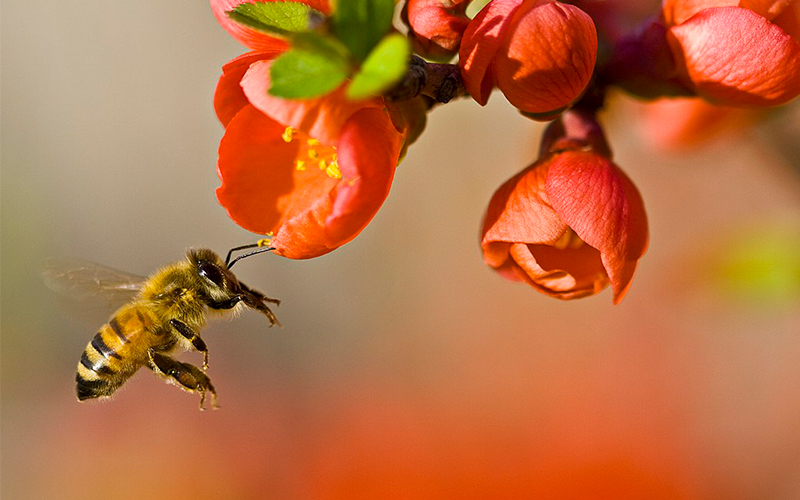
Bees have repeatedly attracted media attention in recent years. Documentaries, such as More than Honey,[1] and alarming figures on bee mortality have helped the honeybee to take on a new role as a flagship species for biodiversity.
On the list of the world’s most frequently adulterated foods, honey ranks third (after olive oil and milk). Its definition is simple and beautiful: honey is the sweet substance that bees produce by ingesting nectar or honeydew, enriching it with their own substances, changing it in their bodies, storing it in honeycombs, and allowing it to ripen. Nothing shall be added to or removed from it.
In 2021, EU member states imported 173 400 tonnes of natural honey from non-EU countries, worth €405.9 million, whereas 25 500 tonnes were exported by EU member states outside the EU worth, €146.6 million.[2] Honey is the most expensive form of sugar, and that’s what makes fraud so lucrative. Fake or adulterated honey includes an incorrect declaration of origin; stretching honey with sugar syrup from corn, sugarcane, and rice; or completely artificial products.
In a series of experiments, students learn about bees, try a biological method for distinguishing real honey from artificial honey, and investigate different biological and biochemical aspects of honey. An article on the chemical aspects will follow in a later issue.
The activities are suitable for secondary school students aged 14 and older. They are related, so, ideally, they should all be done as part of a larger project on bees and honey, but the activities can also be carried out individually.
Before beginning the practical activity, it is nice to place the work on honey in context by learning about the fascinating biology of bees. Bees are also a really useful example to help put the curriculum topic of epigenetics into context, given the role this is known to play in the differentiation of queen bees from worker bees. This activity is flexible, and teachers can choose which parts to use, depending on how much time they have.
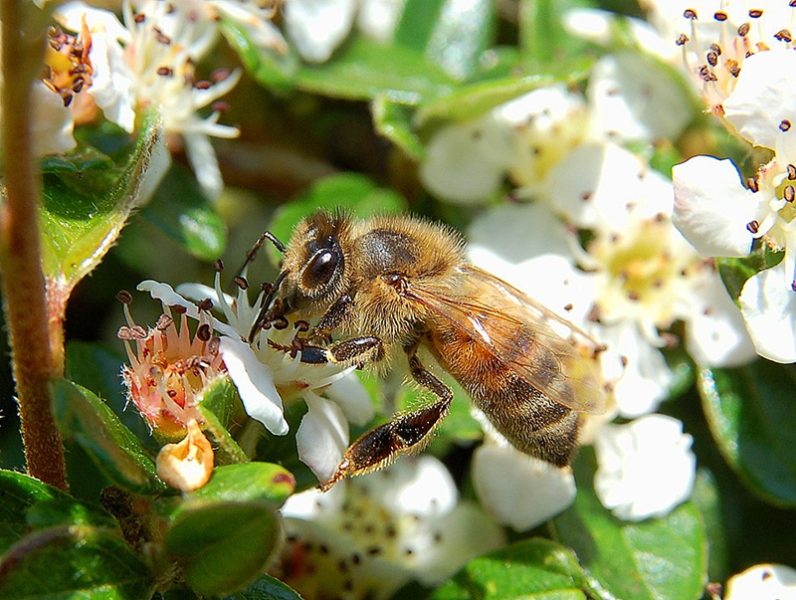
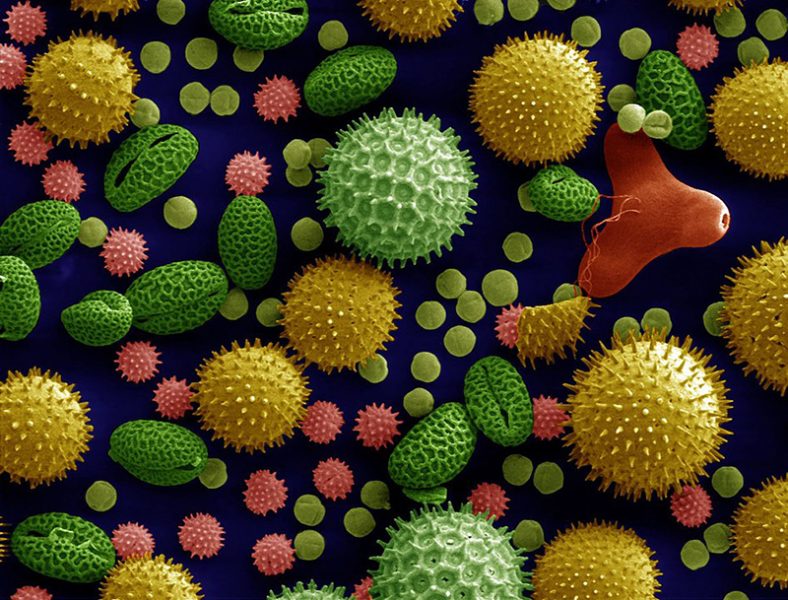
Honey is interesting to investigate with a microscope. Only real bee honey contains pollen grains, which are collected by the bees as larval food and transported to the hive on their legs. It is normally stored in separate cells of the honeycomb. However, in the case of real honey, some pollen always gets into the honey cells on a small scale. Pollen analysis can be used to check whether the honey is correctly labelled, since fake honey is a huge problem in some places. For this purpose, we analyse different types of honey. This will take approximately 45 min.
Different types of pollen grains can be found. In varietal honey, such as lavender honey, you should find mostly the corresponding type of pollen. Compare your results with reference pictures from Pollen
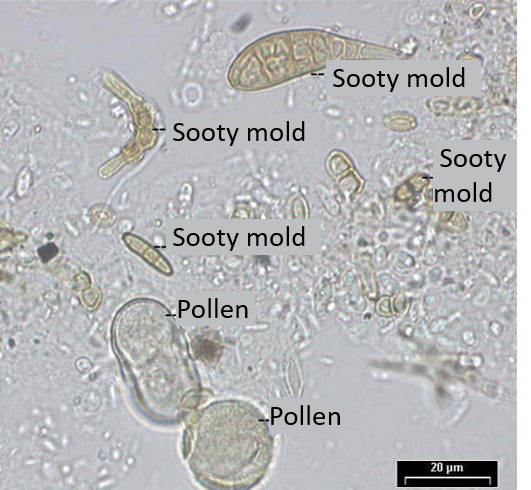
Fake or highly processed honey has no pollen in it. Pollen is removed, including to prevent crystallisation, and to hide any traces of where the honey was produced. Pollen acts as a fingerprint and allows scientists to trace where the bees came from, proving the country of origin.
Discuss some of the following questions with your students:
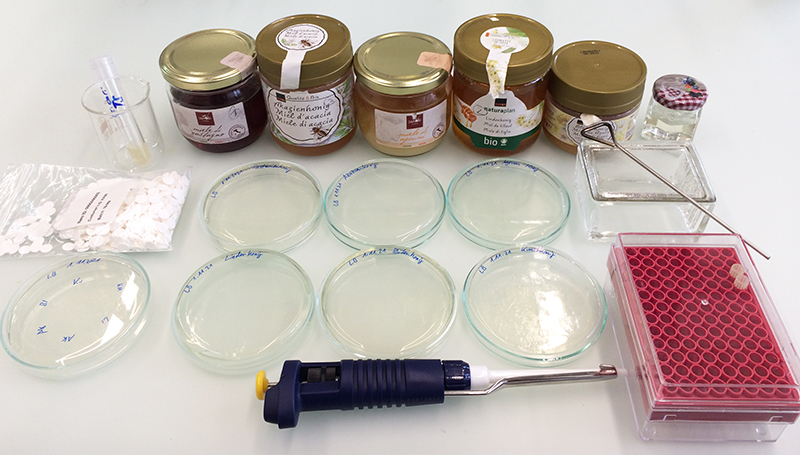
Honey is known to contain preservative compounds and to have antimicrobial properties. There are a number of compounds that contribute to this effect (two are explored further in Activity 4). In this experiment, we start by testing the antibacterial effect of honey. The activity will take about 30 mins of active time (with the results evaluated a day or two later).
Wear safety goggles when you perform the experiment.
In this experiment, it is very important to work under sterile conditions to avoid contamination of the Petri dishes. Therefore, the plates must not be left open, and they must be closed quickly and sealed with parafilm after inoculation with bacteria.
The use of honey as a traditional remedy for bacterial infections has been known since ancient times. Scientific research studies focused on identifying so-called inhibines, with antibacterial effects (apart from hydrogen peroxide), have been undertaken. Microbiological assays can be used to test for the antibacterial effects of honey. Different diameters of the inhibition zones of different honeys show their different antibacterial potentials. As a positive control, you may include a conventional antibiotic, such as penicillin, and as a negative control, water on filter paper may serve.
Discuss some of the following questions with your students:
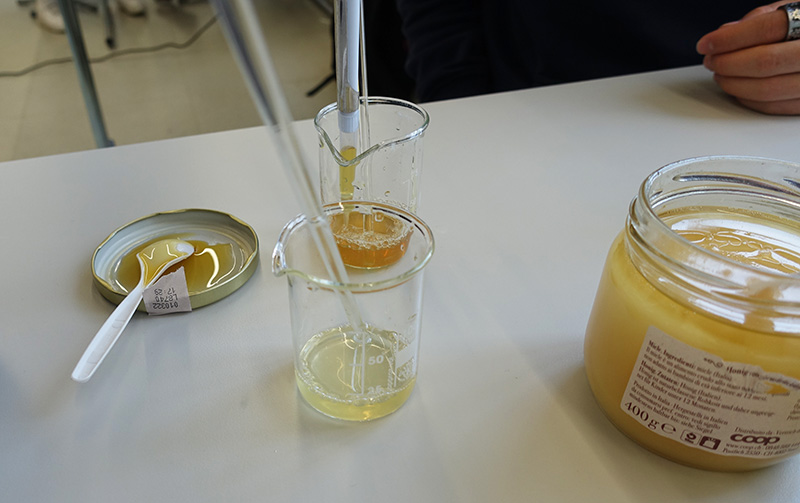
An important enzyme in honey is glucose oxidase. It catalyses the oxidation of b-D-glucose. This reaction produces gluconic acid and hydrogen peroxide. Both compounds have preservative properties. Gluconic acid lowers the pH value. This provides protection for the honey, especially against fungi. Bee mites (especially the Varroa mite) are also driven away by an acidic environment, which is why beekeepers treat hives with formic acid and oxalic acid. Hydrogen peroxide, on the other hand, is characterised by its bacteriostatic effect. The activity will take about 60 min.

Honey is an excellent starting point to explore a number of biological and chemical concepts. This article gives some biology examples, and another article with more of a chemistry focus will follow. If there is time, it is particularly beneficial to try all the activities as part of a larger project, to show students that dividing science into biology/chemistry/physics is rather artificial: most research topics have multiple facets and require a multidisciplinary approach. These activities are intended as a starting point/inspiration for a project relating to bees; teachers can also bring in other aspects, such as the ecology of bees (e.g., their importance as pollinators) and the fascinating world of bee social behaviour.
[1] The More than Honey movie (German language): http://www.morethanhoney.ch
[2] Data on the international trade of honey in 2021 on the Eurostat website: https://ec.europa.eu/eurostat/web/products-eurostat-news/-/edn-20220819-2
[3] The digital pollen atlas (predominantly in German language): https://pollen.tstebler.ch/MediaWiki/index.php?title=Pollenatlas#gsc.tab=0
The life of bees and honey fascinated people starting from the early history of mankind until our days. The author gives teachers and especially their pupils the opportunity to understand the processes behind this phenomenon based on interesting materials and activating experiments. The article could also be used as an example of the importance of biodiversity.
The novelty in this article is the many aspects of life around the bees for mankind.
It could also be used for a comprehension exercise. Questions could be for example:
Ernst Hollweck, biology & chemistry teacher, Staatliches Gymnasium Holzkirchen, Germany
Download this article as a PDF